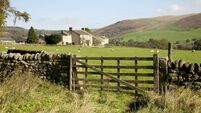Ice shelves’ demise reveals beauty of hidden wildlife
This is the first time explorers have been able to catalogue wildlife where two mammoth ice shelves used to extend over the Weddell Sea.
At least 5,000 years old, the ice shelves collapsed in two stages over the last dozen years. Global warming is seen as the culprit behind the ice shelves’ demise, said Gauthier Chapelle of the Polar Foundation in Brussels.













